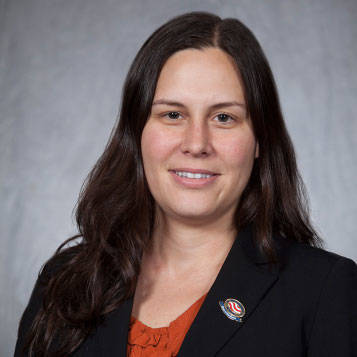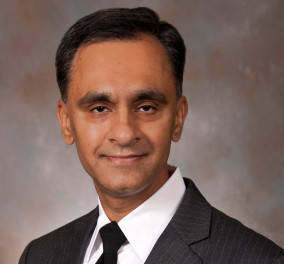Jennifer Nathan, MD, and Mohammad Naeem, MD, FACR, Co-Chairs of the American College of Radiology® (ACR®) General, Small, Emergency and/or Rural Practice Network (GSER) Military Subcommittee, contributed this post.
In the oath of enlistment, members of the United States military commit to "defend the Constitution of the United States against all enemies, foreign and domestic." Military radiologists serve our nation in a unique dual way, not only by deploying to war and conflict zones around the world but also answering the call to ensure our communities receive high-quality imaging care if and when military assistance is requested by the civilian authorities. As we pause to honor our servicemen and women this Veterans Day, the GSER Military Subcommittee would like to share five interesting facts that civilian radiologists may not know about their military counterparts:
- Military radiologists are medical warfighters who train, drill and perform select warrior tasks and maintain physical fitness like their warrior counterparts in the military. A radiologist may be in harm’s way several times during a combat deployment.
- Military radiologists work hand-in-hand with other U.S. government agencies in the mitigation, prevention, preparation, response, consequence management and recovery from man-made and natural disasters.
- Deployed military radiologists use ingenuity, innovation and improvised methods to perform complex imaging-guided procedures with the most limited resources in austere conditions.
- Military radiologists are military diplomats who positively interact and collegially work with the military and civilian medical personnel of other nations during both wartime and peacetime.
- Military radiologists deploy to austere and remote locations worldwide in support of humanitarian and peacekeeping missions, thereby projecting American soft power across the globe.
Learn more about the membership and education discounts the ACR offers for U.S. Military, U.S. Public Health Service and Department of Veterans Affairs diagnostic and interventional radiologists, radiation oncologists and medical physicists. We look forward to continuing to share the latest activity of the ACR Military Radiology Subcommittee on acr.org.
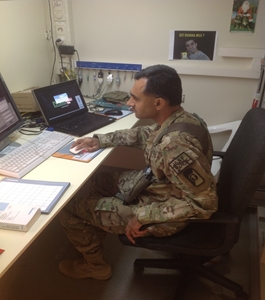 |
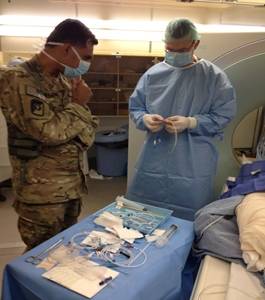 |
| Mohammad Naeem, MD, FACR, operating the CT scanner by himself at his deployment site in the absence of a CT technologist. | Mohammad Naeem, MD, FACR, and his surgeon colleague placing a pediatric triple lumen catheter under CT guidance to drain a peri-rectal complex fluid collection in an Afghan soldier. |
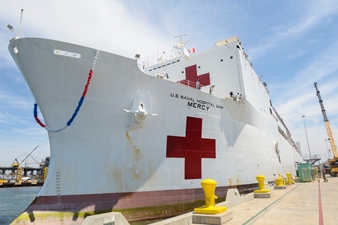 |
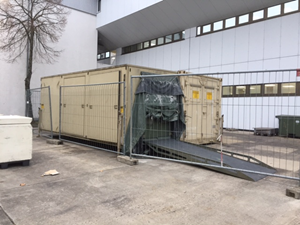 |
| Photo By: Navy Petty Officer 2nd Class Zach Kreitzer, VIRIN: 180721-N-PN275-1061 | A deployable military CT scanner in an ISO Shelter that can be transported by plane, train, truck, helicopter or all of them. |
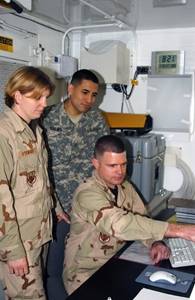 |
|
| Radiology team provides critical care for battlefield injuries. Senior Airman Julie Stewart, (from left) Army Pfc. Daniel Salas, and Maj. Robert Jesinger review an X-ray at the Air Force Theater Hospital at Balad Air Base, Iraq. Airman Steward is a 332nd Expeditionary Medical Group radiology technologist, and Major Jesinger is the 332nd EMDG radiology flight commander, both deployed from Travis Air Force Base, Calif. Private Salas is a 53rd head and neck team radiology technologist deployed from Fort Lewis, Wash. (U.S. Air Force photo/Staff Sgt. Alice Moore)VIRIN: 070113-F-7323M-101.JPG IMAGE IS PUBLIC DOMAIN | |
Jennifer Nathan, MD, is a staff neuroradiologist at the United States Air Force Malcom Grow Medical Clinic at Andrews Air Force Base in Maryland. Army Colonel Mohammad Naeem, MD, FACR, is the Director of the Armed Forces Radiobiology Research Institute (AFRRI/USUHS) in Bethesda, MD, and a visiting staff Radiologist at Defense Health Agency’s Fort Belvoir Community Hospital in Virginia. The opinions and assertions expressed herein are those of the authors and do not necessarily reflect the official policy or position of the Uniformed Services University or the Department of Defense.
Please share your thoughts in the comments section below and join the discussion on Engage (login required).

